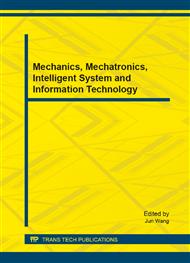[1]
C. Kreitz, Program synthesis, in: Automated Deduction-A Basis for Application, Academic Publishers, Netherlands, 1998, pp.105-134.
Google Scholar
[2]
C. George, A.E. Haxthausen, S. Hughes, the RAISE Development Method, Prentice Hall, New York, (1995).
Google Scholar
[3]
J.R. Abrial, the B-Book: Assigning Programs to Meanings, Cambridge University Press, Cambridge, (1996).
Google Scholar
[4]
J.Y. Xue, Two new strategies for developing loop invariants and their applications, J. Comput. Sci. Tech. 8 (2), 1993, 147-154.
Google Scholar
[5]
J.Y. Xue, A unified approach for developing efficient algorithmic programs, J. Comput. Sci. Tech. 12 (4), 1997, 314-329.
Google Scholar
[6]
J.Y. Xue, B. Yang, Z.K. Zuo, A linear in-situ algorithm for the power of cyclic permutation, in: Proc. 2nd International Frontiers of Algorithmics Workshop (FAW'08), Springer-Verlag, Heidelberg, 2008, pp.113-123.
DOI: 10.1007/978-3-540-69311-6_14
Google Scholar
[7]
H.H. Shi, J.Y. Xue, PAR-based formal development of algorithms, Chinese J. Comput. 32 (5), 2009, 982-991.
DOI: 10.3724/sp.j.1016.2009.00982
Google Scholar
[8]
M. H. Alsuwaiyel, Algorithms: Design Techniques and Analysis, World Scientific, 1999, pp.172-176.
Google Scholar
[9]
T. H. Cormen, Introduction to Algorithms, second ed., MIT Press, Cambridge, (2001).
Google Scholar
[10]
D.R. Smith, M.R. Lowry, Algorithm theories and design tactics, Sci. Comput. Program. 14 (2-3), 1990, 305-321.
Google Scholar
[11]
D.R. Smith, Generating programs plus proofs by refinement, in: B. Meyer, J. Woodcock (Eds. ), Verified Software: Theories, Tools, Experiments, LNCS 4171, Springer-Verlag, Heidelberg, 2008, pp.182-188.
DOI: 10.1007/978-3-540-69149-5_20
Google Scholar
[12]
L. Meertens, Algorithmics-towards programming as a mathematical activity, Math. Comput. Sci. 1 (1986) 289-334.
Google Scholar
[13]
R.S. Bird, An introduction to the theory of lists, in: Logic of Programming and Calculi of Discrete Design (NATO ASI Series F), 1987, pp.5-42.
DOI: 10.1007/978-3-642-87374-4_1
Google Scholar
[14]
R.C. Backhouse, An exploration of the Bird-Meertens formalism, TR CS 8810, Department of Computing Science, Groningen University, (1988).
Google Scholar
[15]
D. Cansell, D. Mery, Proved-patterns-based development for structured programs, in: Proc. 2nd International Symposium on Computer Science in Russia, LNCS 4649, 2007, pp.104-114.
Google Scholar


